Abstract
Because of the beneficial effect on the character and mortality of experimental brain injury, 21 patients with critical brain injury (thought to be incompatible with life using standard methods of treatment) were subjected to artificial hypothermia (28°-36° C.) for two to 10 days. Nine died and 12 survived, but six of the survivors are permanent invalids with dementia. The hazards are staphylococcal pneumonia, which occurred in eight cases and contributed to all the deaths, and gastrointestinal ulceration with bleeding and perforation, which was fatal in another. The results in patients with clots did not differ from those without. Youth was the only common factor in the successful cases. Prognosis was hopeless in the presence of large fixed pupils. About one in four of these critical cases will fare well, but it is evident that a large proportion have such gross or microscopic tearing of deep cerebral structures that in the event of survival there will be severe mental and physical handicaps.
Full text
PDF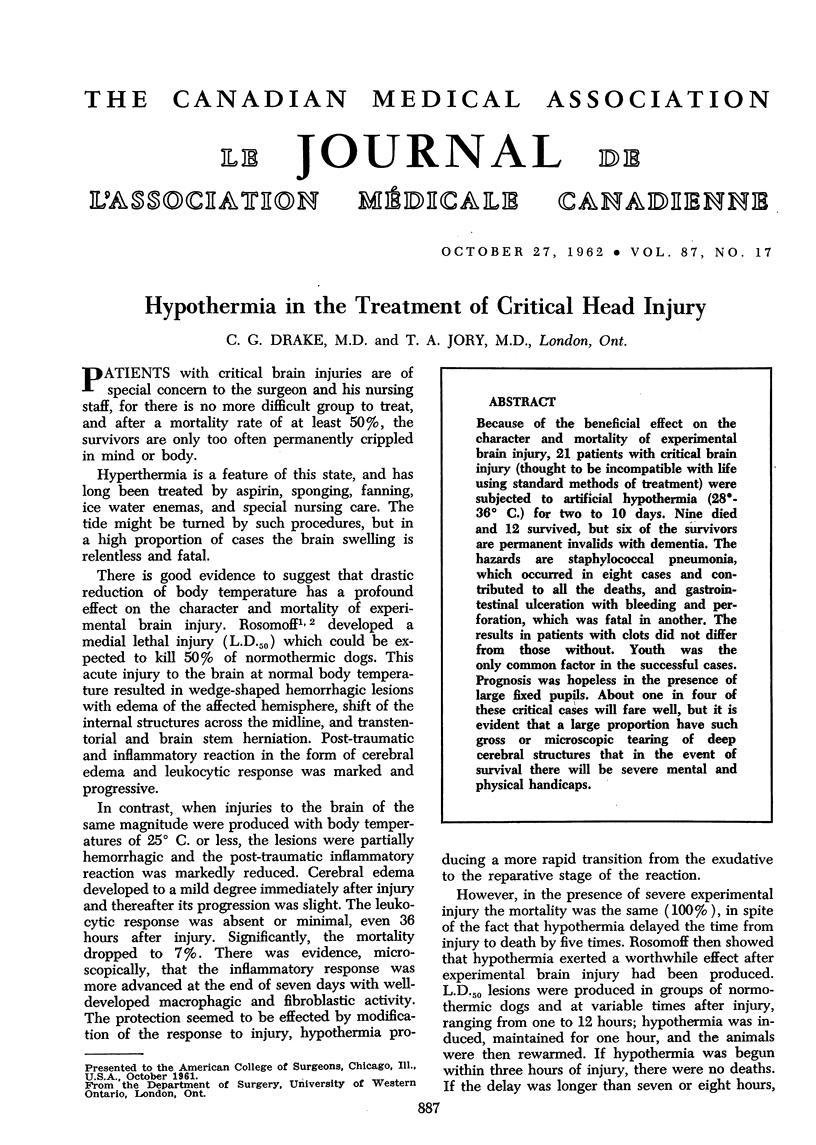
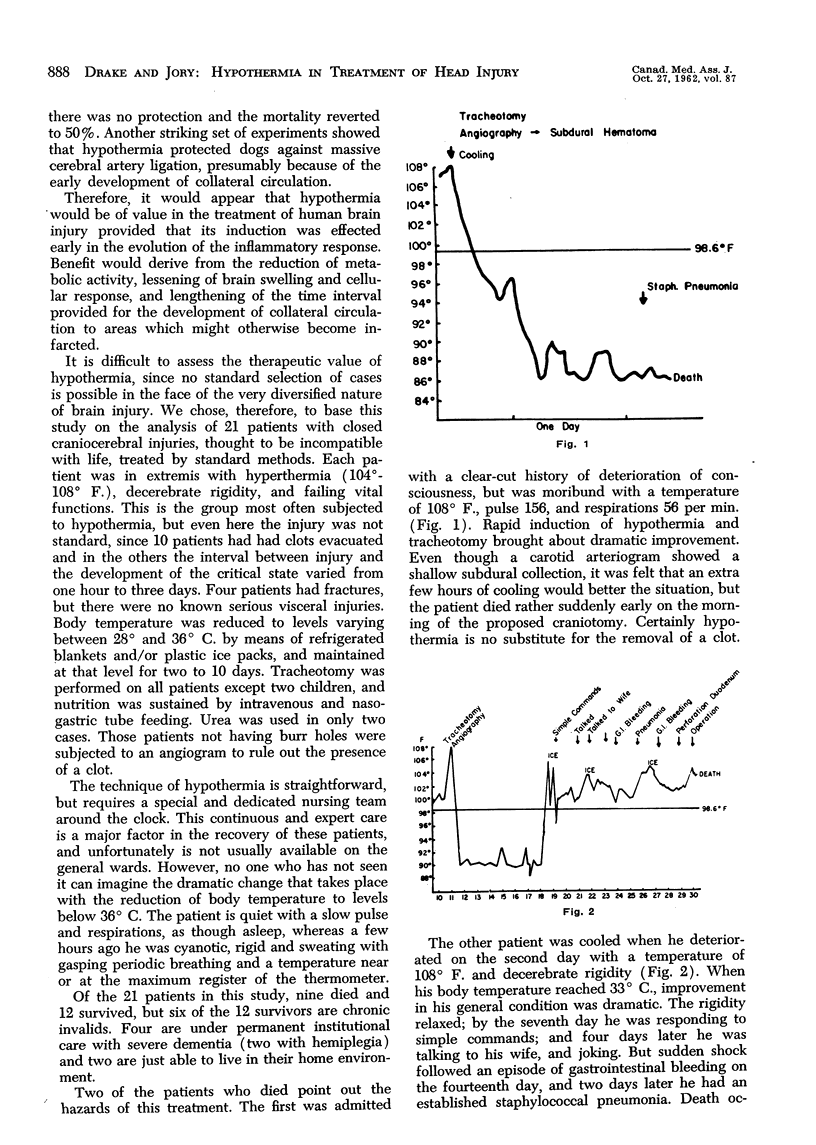
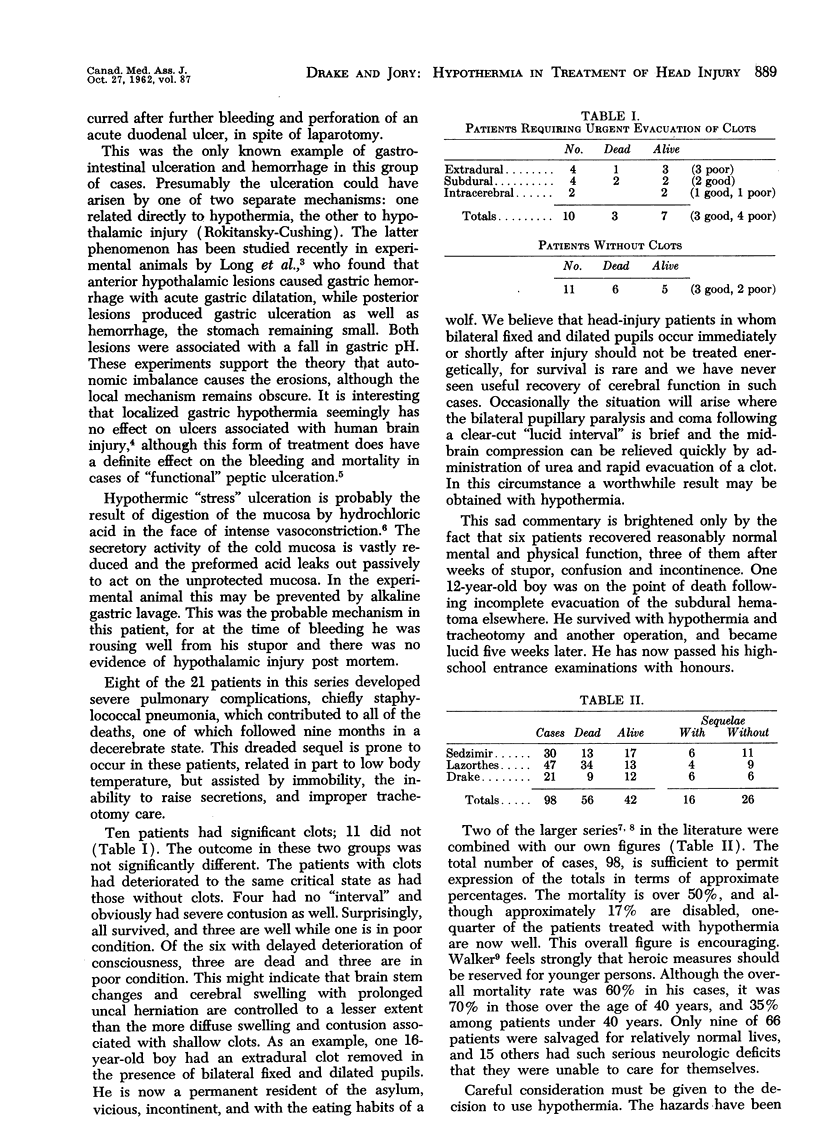
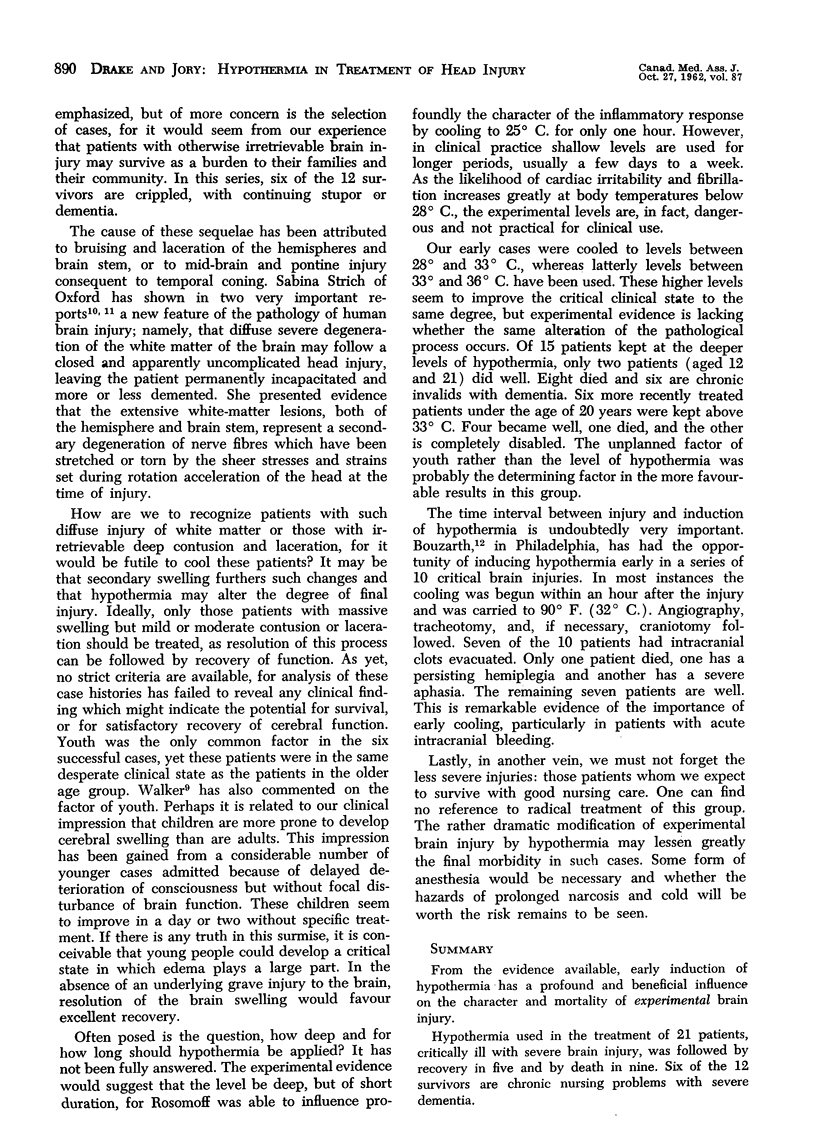
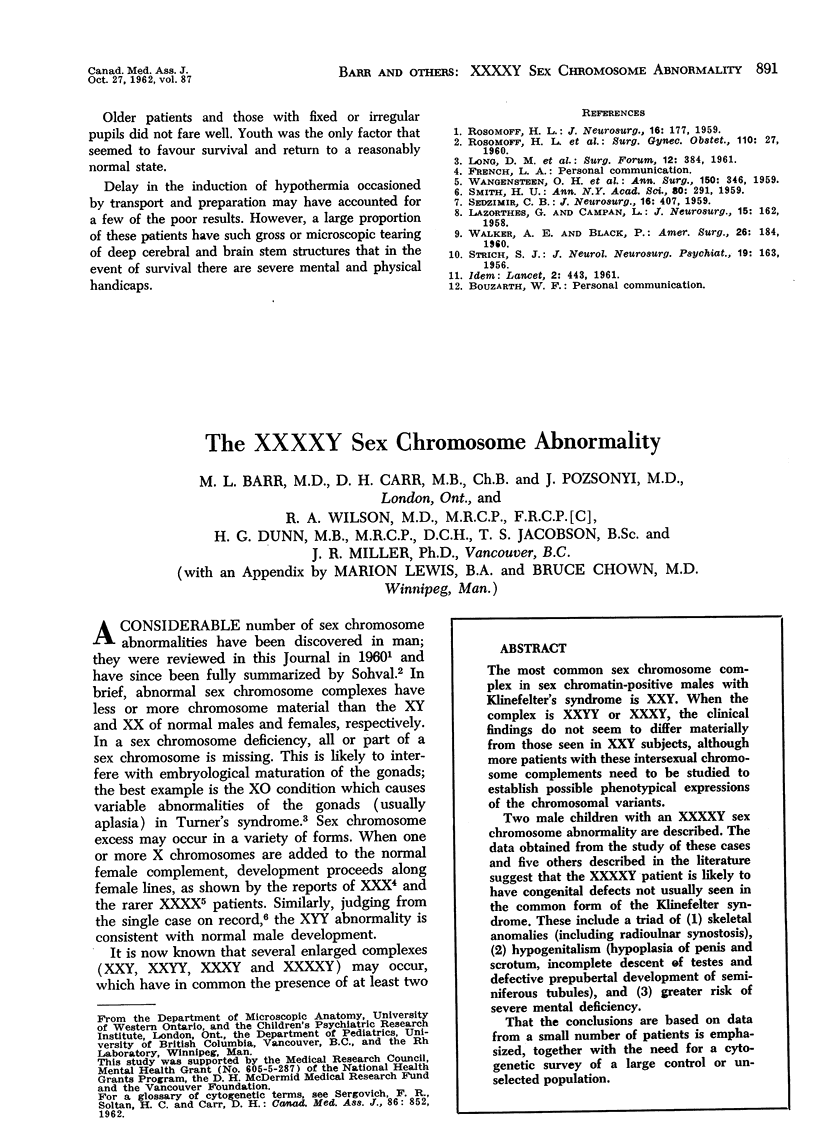
Selected References
These references are in PubMed. This may not be the complete list of references from this article.
- LAZORTHES G., CAMPAN L. Hypothermia in the treatment of craniocerebral traumatism. J Neurosurg. 1958 Mar;15(2):162–167. doi: 10.3171/jns.1958.15.2.0162. [DOI] [PubMed] [Google Scholar]
- ROSOMOFF H. L. Experimental brain injury during hypothermia. J Neurosurg. 1959 Mar;16(2):177–187. doi: 10.3171/jns.1959.16.2.0177. [DOI] [PubMed] [Google Scholar]
- STRICH S. J. Diffuse degeneration of the cerebral white matter in severe dementia following head injury. J Neurol Neurosurg Psychiatry. 1956 Aug;19(3):163–185. doi: 10.1136/jnnp.19.3.163. [DOI] [PMC free article] [PubMed] [Google Scholar]


